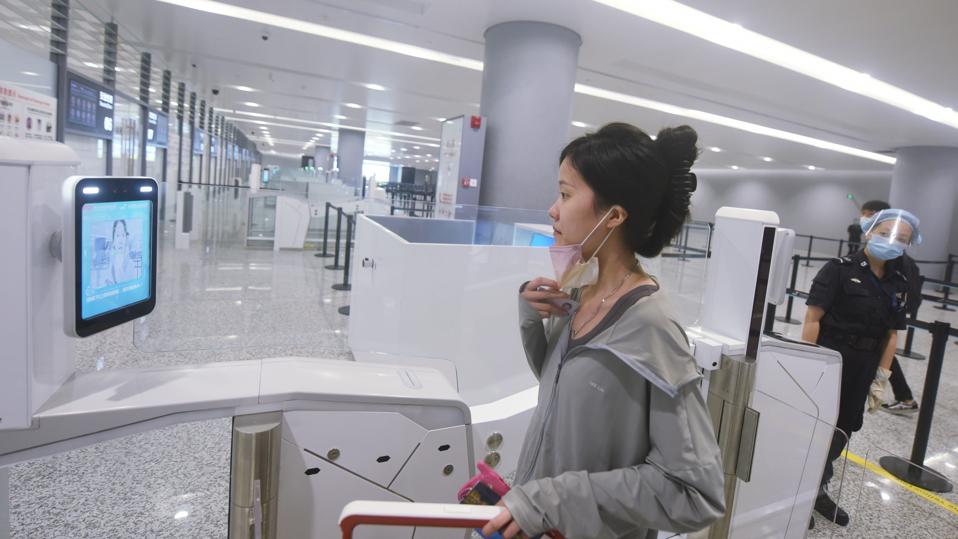Whether being a road warrior is something to boast about or a tragic testament to a life wasted in airports I couldn’t say, but as a road warrior who spends a lot of time thinking about digital identity, I am particularly interested in the complex value chain around travel. Now that the International Air Transport Association (IATA) has successfully tested the first fully integrated digital identity and verificable credential journey from London Heathrow (LHR) to Rome Fiumicino (FCO) with British Airways, it looks as if my dreams of seamless travel are a step closer to reality.
End To End Biometrics
IATA has been working on digital identity standards based on W3C Verifiable Credentials (VCs) and decentralised digital identity designed to be interoperable between different stakeholders, such as airlines, travel agents, airports and governments. They have already released preliminary specifications for the W3C VC schema for passport, visa, and the International Civil Aviation Organization (ICAO) Digital Travel Authorization (DTA) for industry testing.
The LHR-FCO passenger shared their loyalty data (stored as a VC in their smart phone’s digital wallet) which enabled airlines using the appropriate interfaces to make offers through the travel agent channel. Once the customer had chosen the offer and purchased the flight, no more Passenger Name Records (PNR), e-tickets or miscellaneous documents were needed because the travel document was generated as a VC stored in a digital wallet.
With such a digital journey, the necessary validations and other check-in procedures can be carried out away from the airport. Along with the digital wallet with the digital travel confirmation, a digital passport will be a key enabler. By sharing the nationality data of the digital passport, passengers can obtain their travel document requirements and satisfy them without leaving the house.
There are colossal benefits to this, and not only those to do with reducing lines at airports. A good friend of mine went to the airport with her children just before Christmas to fly on a family holiday. The destination country (in Europe) requires travellers to have passports valid for at least six months from the day of arrivaal. As it turned out, her passport was due to expire one day before six months from the date of travel, so even though she was only going there for four days, she was denied boarding!
This is precisely the kind of problem that can be avoided by having people check in using their smartphone and a contactless passport at home, before they ever set off for the airport. In the BA trial, the passenger shared their digital passport and order data with British Airways and received a “Ready to Fly” confirmation. This gave them the ability to go hands-free (ie, with phone and passport remaining in pocket or purse) through through biometric gates, into lounges and onto the aircraft just as I walked hands-free into America last time via the Global Entry biometric check at San Francisco (SFO).
The United Kingdom’s Border Force Agency is planning to make passing through British airports completely hands-free, replacing the need to present a passport with face recognition kiosks that will be trialled at a number of airports this year. Phil Douglas, the director general of the Border Force, told an audience at the Airport Operators Association conference “I’d like to see a world of completely frictionless borders where you don’t really need a passport.… In the future, you won’t need a passport – you’ll just need biometrics.”
I’d like to see that too. And as soon as possible.
The use of biometrics for hands-free travel is steadily spreading. Frankfurt Airport will soon be the first in Europe to allow all airlines to use face biometrics as identification from check-in to boarding the aircraft. Passengers will be able to register through their mobile device using their Star Alliance app or directly at the check-in kiosk with their biometric-enabled passports. They can then pass smoothly through the airport using the facial recognition-equipped checkpoints.
You may well think that face-recognition checkpoints sound Orwellian, but the fact is that the majority of passengers want to use biometric data instead of physical passports and boarding passes: IATA says that three-quarters of passengers want to travel this way. Over a third have already experienced using biometric identification in their travels, with an 88% satisfaction rate..
(I might add as an aside that I imagine such an all digital approach to be more secure than one with manual intervention, since automatic face recognition software is significantly more accurate than the average person at detecting fraudsters.)
Metatravel
The evolution of paperless travel opens up the possibility of seamless journeys through both universe and metaverses with the use of interoperable standards. Far from ending travel, the potential to use metaverses to showcase destinations and sell products must be enormous. It is easy to imagine travel companies partnering with hotels, tourist boards and experience providers to offer virtual tours of accommodation, destinations, attractions and more.
Marketing aside, the transition to all-digital travel will inevitably open up new opportunities for interaction. I rather agree with McKinsey, who say that as such innovative formats become more mainstream, “new economic models are emerging” and suggest that the travel industry stands to gain some $20 billion per annum by 2030. The travel experience of the future will almost certainly be some hybrid model, both online and offline, with virtual events, edutainment and inspiration combined with physical destinations.
I can well imagine my travel avatar wandering around a virtual version of a hotel in the Bahamas before booking the hotel and the flight with a couple of clicks and then turning up at the airport and wandering around the physical space, on to the plane, with similar hands-free, document-free, hassle-free ease.

